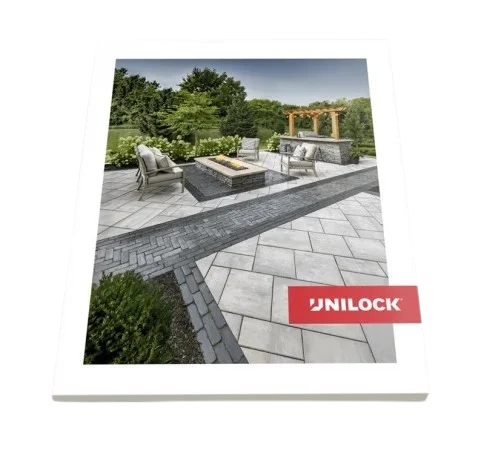How to Build Steps

Technology advances, new product offerings, and equipment improvements have led to safer and faster step build projects. It’s important for design/build contractors to stay accountable on these updates and to regularly assess whether their current processes and tools are efficient. Anywhere you can uncover opportunities for reducing time and labor can have a direct effect on the business, by opening up capacity for other projects. For optimum efficiency when constructing steps, consider whether you have software, equipment, and training that supports your crew while they are working—and your business as a whole.
Best Practice Construction Techniques
Whether you opt to work with stone or concrete pavers, once you have the cut slabs or pavers on site, the principles behind the construction of steps installation are the same.
Step 1: Remove all the sod and topsoil on the embankment that the steps will ascend. To avoid the steps settling and sinking after construction, excavate down to firm subsoil that has not been disturbed in recent years.
Step 2: Overlay the base soil with geotextile fabrics over the area that the steps will cover.
Step 3: Add a gravel base over the fabric, filling up the slope. Level and compact as necessary, using a hand tamper or mechanical tamper to ensure maximum compaction.
Step 4: Depending on the size of the stone or concrete pavers, you may opt to use a machine, such as the Unilock Unilyft, to put each in place. If placing by hand, small modular blocks will be easier for your team to handle. Place the first and lowest block using a level.
Step 5: Then proceed with backfilling and compacting gravel for the placement of the second step. Compact this in the same way, using a hand or mechanical tamper. Step 6: Add the next paver, and repeat the process. For steps with coping, adhesive is required between the coping and blocks to ensure safety and durability over time. This technique will suit most step build projects. If at any time while you are in the early stages of a project and need some advice, your Unilock Training Manager is available to offer additional insights regarding design, product selection, as well as on-site questions.
Showcase a Simulated 3D Design
Help increase your close rate by incorporating step design into a realistic 3D image. There are a number of landscape design programs available that will accurately display how step projects will look once complete. The use of such design programs will reduce the possibility of scope changes over the course of a project, saving your business time and money. Being able to offer a 3D visual to your customers can save time in the front-end decision-making between you and your customer, particularly if steps are just a small part of a larger project. At Unilock, we offer powerful design assistance via the UVision 3D Landscape Creator. Use this software to sketch out your design and select from our library of Unilock pavers, along with 15,000 other hardscape and softscape assets, to show your customer exactly how their new step project will appear.
Expand Your Product Portfolio
To ensure that you are able to explore and offer a product portfolio that is wide enough to create a polished, yet individual look for every customer, Unilock offers a range of durable, easy-to-use step products, as well as decorative coping. The customer preference may be pure natural stone, or there’s the option of Ledgestone, which is made with Reala Technology to exude the rugged elegance of natural stone yet achieve the reliable durability of a Unilock paver.
Prioritize the Safety of Your Team
In addition to modern, diverse product lines for step projects, you also have access to advanced equipment that can reduce labor costs while also minimizing any physical strain of crew members. The Unilock UniLyft Paver Installation Machine lifts and places pavers into place, fast and accurately. The machine can install up to 700 square feet per hour, lifting up to a weight of 310 lbs. For step projects in particular, this equipment reduces the labor burden on your team and will speed up the construction process.
Upskill the Team with Certification Courses
During your onboarding process, consider investing in certification courses for your staff. They are not time intensive, and yet they will ensure your team is well versed on installation best practices, safety precautions, and more. At Unilock, we offer “Fundamentals of Garden Walls, Pillars and Steps.” This online module teaches core understandings of step construction, including leveling methods and cutting coping. Whatever your upcoming project needs, you will be able to find an online training that covers essential best practices so you can meet and surpass the expectations of your customers.







